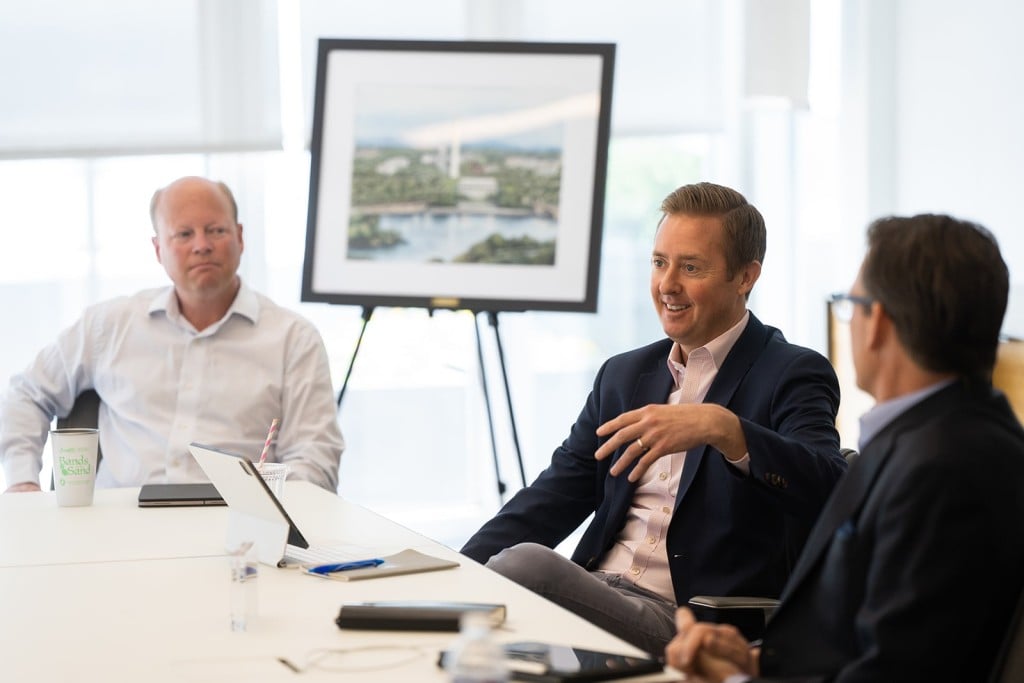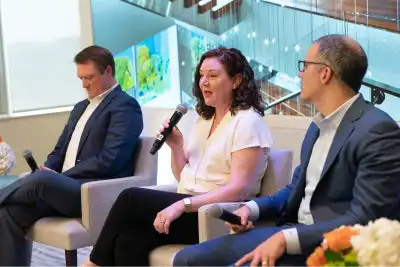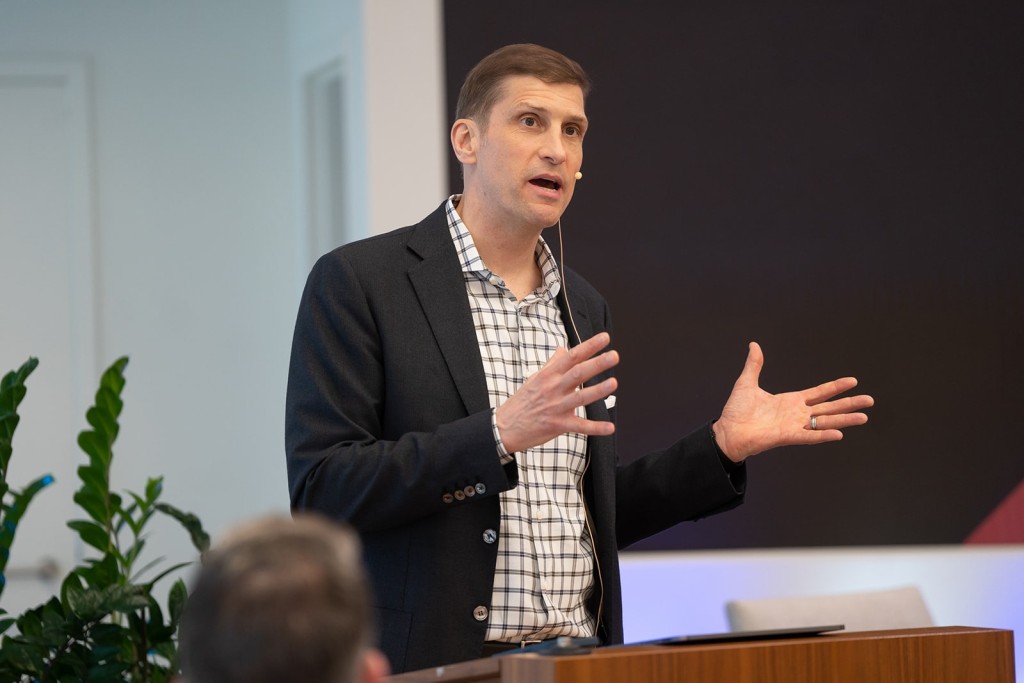Contributors
Director of Research
Portfolio Manager
Sr. Research Analyst
Executive Managing Director
Related Articles
Stay Up To Date
Something has gone wrong, check that all fields have been filled in correctly. If you have adblock, disable it.
The form was sent successfully
We do not claim unique ideas. Our edge is a culture that allows us to do the obvious but difficult things with repeatable consistency. That consistency comes from shared context, shallow hierarchy, and real intellectual safety that lets us buy the portfolio every day. We use finish-line thinking and judge each new datapoint by whether it changes the five-to-seven-year goal or only today’s weather.
Key Points
- Culture is our edge. It gives people the safety to explore widely, a shared language to decide quickly, and incentives to act with discipline.
- Focusing on what matters most is our discipline, enabled by testing each signal against the five-to seven-year finish line and tuning out the rest.
- Courage to stay long term is our strength, cultivated by holding our nerve when the case is intact and moving fast when it changes.
We do not claim to have unique ideas. In markets this large and well covered, that would be arrogant. We see our advantage as the discipline to do obvious but difficult things with consistency. That edge is rooted in a culture that lets us cast the net wide and focus on what truly matters. It enables us to identify many great businesses and own them for a long time. We size with intent. We change course quickly when the facts change. It looks simple and obvious, yet it is hard to do day after day.
What makes it possible is a culture, honed over our 30-plus year history, that turns slogans into behavior when pressure rises and headlines get loud.
We buy businesses, not stocks. We test our cases every day and let new information move us.
We are careful with labels like divergent or visionary. We do not need to be the only investors who see an opportunity. We need to be the team that scans widely, holds off on quick judgment, and keeps attention on what we believe will matter over years. When people try to be different for the sake of being different, results often remind them to respect the obvious. The hard part is holding through storms and admitting when a case has broken. The habits that allow both come from how we work together every day.
Long-term investing looks simple on a chart after the fact. In the moment it can be chaotic. Policies shift. Platforms change rules. Capital allocation can look irrational before it makes sense again. Each headline can feel like a verdict. Sometimes it is. Often it is not. Our daily job is to separate a true change in the business from the drama of the path. Culture gives people permission to open the aperture, collect unexpected signals, and then narrow decisively without ego.
From Noise to Focus
People are not naturally wired for patience. Behavioral biases tilt us toward quick rewards. Media cycles amplify that pull. Many good investments travel a volatile path and can lag for long stretches before long-term potential shows up. Even the best investors fail to beat the market on roughly half of their stock picks. Knowing this, we keep the framing simple, so judgment stays clear. We always want to hold our focus on what matters most.
We imagine the business we want to own five to seven years from now, then work backward. Every new datapoint gets one test. Does it change the finish line or only today’s weather. If the finish line holds, we stay patient and sometimes add. If the finish line moves, we resize or exit. Before we decide, we widen the lens. Conviction rarely arrives as a lightning bolt. It builds like a mosaic. A conversation on a trip reframes a key variable. A public moment hints at a shift in industry dynamics. A small operating detail explains why scale may matter more than we thought. Breadth first. Judgment later. When the pieces line up, we press. When they stop lining up, we change our minds. The humility to do both is learned behavior here and it is reinforced every day.
Patience is not passivity. Often the honest answer is not yet, and the right action is to hold. Other times the answer is yes, and the right action is to rotate decisively. The harder part sits on the other side of the trade. To buy something we must sell something. If we have done the work, we already own companies we like a lot. That tension forces us to rank convictions and to be explicit about what would bring a name from the watch list back into the portfolio. Explore broadly. Act narrowly. That rhythm makes long-term ownership possible.
Conviction, Together
Analysts lead the work, but no one flies solo. Research trips, Friday sessions, Slack threads, and quick ad-hoc calls build shared context. Multiple people ride shotgun on a case. They push from different angles, and they know the space. This creates a safe field in which unusual ideas can surface without being swatted down at first pass. By the time we commit, the idea has been challenged by the right minds, not counted by votes. This is why we say investing is a team sport.
Portfolio managers here are business analysts first. They live the research and speak the same language when it is time to size, trim, or add in the teeth of volatility. We reinforce that common language in simple ways. We speak to the same criteria. We refer to the same philosophy. We use the same process. The point is not ceremony. The point is speed and clarity when facts move and the decision window is narrow.
Coordination is a habit, not a calendar entry. Participation on trips is broad enough to surface fresh angles and tight enough to stay focused. The same people show up across meetings in a space, so we do not need to rehash the basics when a debate moves from a visit to a Friday session to a Slack thread. We are already testing the case against the same six questions. The culture both invites wide exploration and expects crisp convergence. That is how the best current idea beats the best defended prior idea.
We keep promising businesses in our orbit even after we sell. That discipline makes it easier to re-underwrite quickly when the evidence turns. Selling and then buying back is not a loss of conviction. It is conviction applied to new facts. We also name the psychology that can slow us down. Embarrassment can feel like a position. Attachment can creep in because a name feels like ours. Calling those traps out loud takes away their power and keeps the funnel wide without letting drift take over.
Risk Means Damage, Not Drama
We respect that many see volatility as risk. We operate with a different lens. We define risk as the permanent impairment of capital. We accept that we are going to encounter bouts of short-term volatility in our quest for long-term gain. If the finish line holds, a drawdown can be a gift. That framing lives in our debates, not only in our materials.
Every datapoint is judged through that lens. Some inputs are loud and unimportant. Others look small and shift the destination. The analyst’s job is to filter the flood, surface what matters, and explain what it does to the case. The team’s job is to push on the same questions until the conclusion is clear enough to act on. We say we buy the portfolio every day. That line is not theater. It is a reminder that circumstances change quickly, and that conviction should follow evidence, not ego.
Culture gives people permission to open the aperture, collect unexpected signals, and then narrow decisively without ego.
We have scars that keep us honest. We have tried to get cute when the better answer was to stay with a clear compounding path. We have underestimated the speed at which a strong organization can adapt. We have held a name because we hoped to be right later rather than admit we were wrong today. Talking about those moments openly trains the same lesson. Keep the finish line in view. Let the team cast widely for signals. Act fast when the case breaks. Hold your nerve when it does not.
Risk discipline also shows up in the way we staff and structure the work. A shallow hierarchy keeps debates close to the research and makes it easier for the best argument to win. Analysts bring the case. PMs bring position context and sizing. Associates play a competitive and supportive role. They help the team move faster without diluting accountability. Mentorship is continuous and informal because the only way to get good at this is to do the work together and get pushed on it. That is how breadth of thought turns into depth of conviction.
Tools Help. Culture Decides
Tools are better than ever, and we use them. We can map exposures and quantify drivers that once lived in spreadsheets. We can show how a portfolio sits relative to a benchmark and how a position contributes to growth drivers across the whole. Clients can do much of the same. That transparency raises the bar for how we explain positioning and change. It sharpens the conversation. It does not make the decisions.
Hold through a storm or admit a miss soon after an exit. Rebuild a position when the facts improve or wait for one more datapoint. Increase weight because the path got cheaper or trim because the path got steeper. Dashboards do not answer those questions. People do. Incentives do. Culture does.
The decisions come from people and incentives. Since our beginnings in 1992, we have emphasized a culture rooted in shared strategy ownership with high levels of trust, candor, and collaboration. That foundation creates intellectual safety to explore unusual angles before we judge, then converge on finish-line decisions with speed. It encourages calculated risk taking and the resilience to hold through turbulence when the long-term case is intact. It lets us rinse and repeat a well-established process and accept that occasional failure is part of compounding over time.
Speed matters because the world moves quickly. What was true a year ago can be different today. Policies shift. Incentives change behavior. New waves bring hype and real adoption at the same time. A culture that treats investing as daily re-underwriting helps us adjust without losing the plot. It also keeps us grounded when consensus swings too far in either direction. The wide-then-narrow rhythm becomes muscle memory. First open the field to many possibilities. Then commit to the few that meet our standard.
In the end our edge is consistency. We buy businesses, not stocks. We test our cases every day and let new information move us. We measure risk by lasting damage, not by noise. We aim to look right over five to seven years, knowing that often requires looking wrong for a while. Culture lets disciplined people do those obvious but difficult things long enough for compounding to show up. It also gives them the space to explore more possibilities before choosing the one that will likely matter most.
We are not asking anyone to believe we are smarter than other investors. We are asking to be judged on whether we have built an environment in which good, plain ideas can be pursued with uncommon consistency. Own great businesses that can grow for many years. Size with intent. Hold through storms when the finish line is intact. Change course quickly when it is not. Obvious. Difficult. Repeatable.
Disclosures:
The views expressed are the opinion of Sands Capital and are not intended as a forecast, a guarantee of future results, investment recommendations or an offer to buy or sell any securities. The views expressed were current as of the date indicated and are subject to change.
This material may contain forward-looking statements, which are subject to uncertainty and contingencies outside of Sands Capital’s control. Readers should not place undue reliance upon these forward-looking statements. There is no guarantee that Sands Capital will meet its stated goals. Past performance is not indicative of future results.
All investments are subject to market risk, including the possible loss of principal. Recent tariff announcements may add to this risk, creating additional economic uncertainty and potentially affecting the value of certain investments. Tariffs can impact various sectors differently, leading to changes in market dynamics and investment performance.
References to “we,” “us,” “our,” and “Sands Capital” refer collectively to Sands Capital Management, LLC, which provides investment advisory services with respect to Sands Capital’s public market investment strategies, and Sands Capital Alternatives, LLC, which provides investment advisory services with respect to Sands Capital’s private market investment strategies, which are available only to qualified investors. As the context requires, the term “Sands Capital” may refer to such entities individually or collectively. As of October 1, 2021, the firm was redefined to be the combination of Sands Capital Management, LLC and Sands Capital Alternatives, LLC. The two investment advisers are combined to be one firm and are doing business as Sands Capital. Sands Capital operates as a distinct business organization, retains discretion over the assets between the two registered investment advisers, and has autonomy over the total investment decision-making process.
This communication is for informational purposes only and does not constitute an offer, invitation, or recommendation to buy, sell, subscribe for, or issue any securities. The material is based on information that we consider correct, and any estimates, opinions, conclusions, or recommendations contained in this communication are reasonably held or made at the time of compilation. However, no warranty is made as to the accuracy or reliability of any estimates, opinions, conclusions, or recommendations. It should not be construed as investment, legal, or tax advice and may not be reproduced or distributed to any person.
Notice for non-US Investors.















